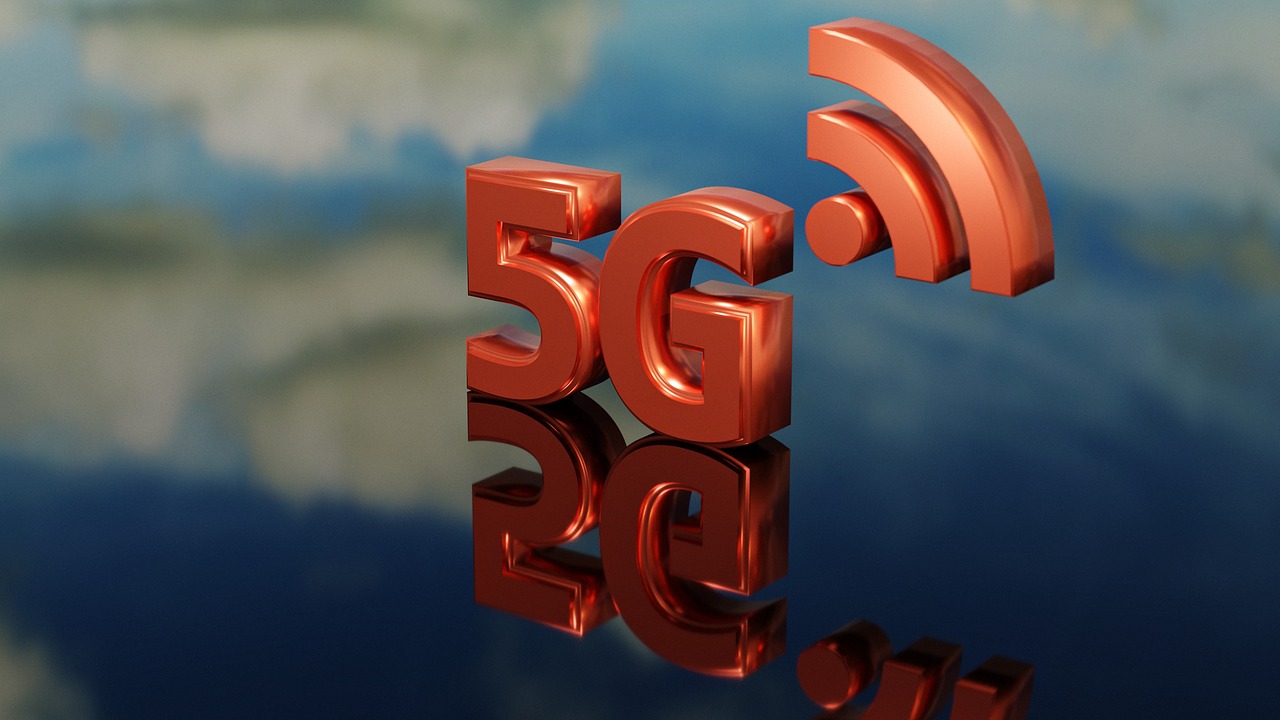In recent years, the Internet of Things (IoT) has emerged as a transformative phenomenon, connecting physical objects embedded with sensors, software, and network connectivity. This interconnection allows these objects to collect and exchange data, creating vast opportunities across various domains, from smart homes to industrial automation. At the forefront of this IoT revolution stands 5G, the fifth generation of cellular network technology, offering a plethora of advantages over its predecessors. Let’s delve into how does 5g technology enhance the internet of things.
The Dynamics of 5G: A Boon for IoT
The advent of 5G has ushered in a host of capabilities that position it as the perfect catalyst for IoT innovation. Here are some of the key benefits it brings to the table:
1. Lightning-Fast Data Speeds
5G boasts remarkable data speeds of up to 10 Gbps, a monumental leap compared to the capabilities of 4G. This rapid data transfer capability is pivotal for real-time IoT applications, such as autonomous vehicles and smart factories.
- Consider the world of self-driving cars, where 5G’s high bandwidth and negligible latency enable vehicles to communicate seamlessly with each other and with the surrounding infrastructure in real time. This real-time communication is paramount for ensuring safe navigation and avoiding accidents.
- In the realm of smart factories, 5G serves as the linchpin that facilitates seamless real-time communication between machines and sensors. This optimization of production processes leads to enhanced efficiency and productivity.
2. Ultra-Low Latency
Latency, which denotes the delay in data transmission, is significantly reduced with 5G, often clocking in at less than 1 millisecond. This minimal latency is indispensable for applications that demand precise coordination, such as robotics and industrial automation.
- In robotics, 5G empowers finer control, rendering robots more versatile and capable of undertaking a broader spectrum of tasks.
- In the domain of industrial automation, 5G’s prowess in enhancing machine control translates to heightened productivity and reduced operational costs.
3. Elevated Device Capacity
5G can accommodate a higher number of devices per cell in comparison to preceding cellular generations. This expanded capacity is indispensable for IoT implementations involving a multitude of devices, such as smart cities and smart grids.
- In smart cities, 5G acts as the backbone that connects sensors and devices constituting urban infrastructure. This connectivity enables real-time monitoring of traffic, pollution levels, and various urban metrics, ultimately elevating the quality of life for city residents.
- In smart grids, 5G acts as the unifying force linking meters and grid components. This optimization of energy distribution equips the grid to respond rapidly to disruptions.
4. Enhanced Coverage
5G extends superior coverage, encompassing even remote rural areas and indoor spaces. This makes it the preferred choice for IoT applications that necessitate deployment in remote locations, such as environmental monitoring and agricultural sensors.
- In the context of environmental monitoring, 5G serves as the link connecting sensors deployed in remote areas. This connectivity contributes to a deeper understanding of the environment and aids in tracking the impacts of climate change.
- In agriculture, 5G networks bolster the connectivity of sensors deployed in fields and orchards. This empowerment enables farmers to monitor crops and livestock more effectively, leading to improved crop management and livestock care.
Added Benefits of 5G for IoT
Beyond the core advantages highlighted above, 5G brings several other perks to the IoT landscape:
1. Augmented Security Measures
5G incorporates a plethora of security features, including robust encryption and multifactor authentication, designed to shield data from unauthorized access. These security provisions are of paramount importance, especially in IoT scenarios dealing with sensitive information.
2. Efficient Power Consumption
5G devices can be tailored to consume minimal power, a pivotal feature for battery-powered IoT devices where energy efficiency reigns supreme.
3. Seamlessness in Connectivity
5G guarantees uninterrupted connectivity between devices, irrespective of their movement. This is essential for applications such as self-driving cars and robotics, where seamless and continuous connectivity is a prerequisite.
5G in Action: Real-World IoT Applications
The impact of 5G on IoT is already being witnessed across diverse industries:
1. Self-Driving Cars: 5G links the sensors and cameras in self-driving cars, enabling real-time communication between vehicles and the surrounding infrastructure. This connectivity is indispensable for ensuring the safety and efficiency of these vehicles.
2. Smart Factories: 5G forms the connecting thread that links machines and robots within smart factories. This connectivity fosters real-time monitoring and control of the production process, resulting in elevated efficiency and productivity.
3. Smart Cities: 5G networks facilitate the connection of sensors and devices forming the backbone of smart cities. This connectivity translates into real-time monitoring of traffic, pollution levels, and various urban data, leading to superior urban planning and resource management.
4. Agricultural IoT: 5G empowers the connectivity of sensors and devices employed for monitoring crops and livestock. This capability enables farmers to collect real-time data and make informed decisions concerning agricultural practices.
The Future: Expanding Horizons of 5G in IoT
The potential applications of 5G within the IoT realm are vast, encompassing several exciting possibilities:
1. Virtual Reality and Augmented Reality: 5G will pave the way for innovative applications of virtual reality and augmented reality. For instance, 5G could be harnessed to create immersive virtual reality experiences for training and education. Additionally, it can provide real-time augmented reality guidance for various professional domains, including medical procedures.
2. Remote Surgery: 5G has the potential to be a game-changer for remote surgery, where a surgeon in one location can perform an operation on a patient situated in another. This breakthrough could facilitate access to specialized medical care in remote areas or during emergencies.
3. Telemedicine: 5G is poised to significantly enhance telemedicine by enabling real-time video and audio communication between doctors and patients. This advancement translates into an elevated quality of remote healthcare.
4. Wearable Healthcare Devices: 5G connectivity can serve as the backbone linking wearable healthcare devices such as fitness trackers and heart monitors. This connectivity empowers doctors to monitor patients’ health data in real-time and intervene promptly when necessary.
5. Smart Homes: 5G holds the potential to revolutionize the concept of smart homes. Devices can communicate seamlessly with each other and with the user’s smartphone, enabling remote home control and task automation.
Challenges on the Horizon
Despite the promising potential, several challenges must be addressed for 5G to fully realize its potential in IoT:
1. Cost: 5G devices and network infrastructure can be relatively expensive, potentially limiting widespread adoption, especially in developing regions.
2. Interoperability: Ensuring that different devices and networks can seamlessly interoperate is paramount for the success of 5G in IoT.
3. Security: The heightened complexity of 5G networks can render them more vulnerable to cyberattacks, necessitating robust security measures.
4. Environmental Impact: The deployment of 5G networks may require increased energy and resources, prompting concerns about its environmental impact.
Conclusion
In conclusion, 5G technology stands as a powerful force in reshaping the Internet of Things (IoT). How does 5G technology enhance the Internet of Things? With its rapid data speeds, low latency, expanded capacity, extended coverage, enhanced security, and energy efficiency, 5G not only enhances but propels the IoT into uncharted territory. It unleashes novel and transformative IoT applications that were once mere possibilities, revolutionizing industries and connecting the world in ways we could only dream of. While challenges persist, the relentless pursuit of solutions and innovation will undoubtedly drive the realization of 5G’s full potential, forging a future filled with groundbreaking IoT advancements.
Frequently Asked Questions
What is 5G technology, and how does it differ from previous generations of wireless technology?
5G is the fifth generation of wireless technology, designed to offer significantly higher data transfer speeds and greater bandwidth compared to 4G. It also provides ultra-low latency, supporting a massive number of devices in close proximity.
In which industries is the integration of 5G and IoT making the most significant impact?
5G and IoT integration is making significant impacts in industries such as healthcare, smart cities, manufacturing (Industry 4.0), and agriculture. These technologies are transforming patient care, optimizing urban infrastructure, improving manufacturing efficiency, and enabling precision farming.
What are some practical examples of 5G-powered IoT applications in daily life?
Practical examples include remote health monitoring using wearable devices, smart home automation for energy efficiency, and autonomous vehicles that rely on 5G for real-time communication and navigation.
How does 5G impact augmented and virtual reality (AR/VR) experiences?
5G’s low latency and high bandwidth enhance AR/VR experiences by reducing lag and providing high-quality graphics, enabling immersive gaming, remote collaboration, and more.
What role does artificial intelligence (AI) play in 5G-powered IoT networks?
AI plays a crucial role in optimizing IoT networks by analyzing large volumes of IoT data, providing insights, predicting device failures, and improving overall network efficiency.
Are there any potential health concerns associated with 5G technology and IoT devices?
While 5G technology has faced scrutiny regarding health concerns, the consensus among health organizations and experts is that 5G radiation is well within safe limits. However, ongoing research and monitoring are essential to ensure the safety of long-term exposure. IoT devices typically use low-power radio frequencies, which have lower health risks compared to higher frequencies used in other applications like radar or medical imaging.
How does 5G impact IoT device management and maintenance?
5G facilitates remote device management and maintenance for IoT deployments. With low-latency connections, software updates, diagnostics, and troubleshooting can be performed in real-time, reducing downtime and operational costs for managing large fleets of IoT devices.
What are the potential cybersecurity risks associated with 5G-powered IoT ecosystems?
The increased connectivity in 5G-powered IoT ecosystems expands the attack surface for cyber threats. Vulnerabilities in IoT devices, such as weak passwords or unpatched software, can be exploited. Protecting against cybersecurity risks involves implementing robust security measures, conducting regular security audits, and staying informed about emerging threats.
Can 5G technology be used for mission-critical IoT applications?
Yes, 5G is well-suited for mission-critical IoT applications due to its low latency and reliability. Examples include autonomous vehicles, remote surgery, and industrial automation, where any delay or disruption could have severe consequences.
What are the cost implications for businesses looking to adopt 5G IoT solutions?
Implementing 5G IoT solutions may involve initial investments in both hardware and network infrastructure. However, businesses should consider the potential cost savings from increased efficiency, reduced downtime, and improved customer experiences that 5G-powered IoT can provide.

